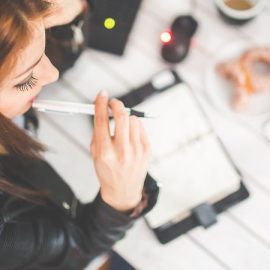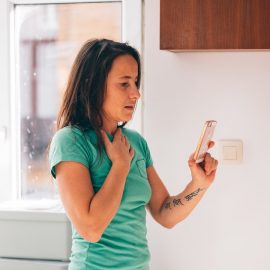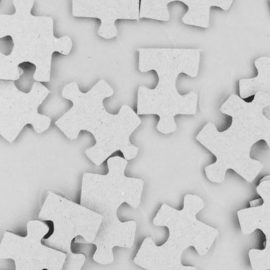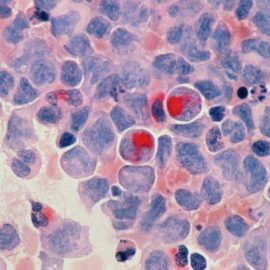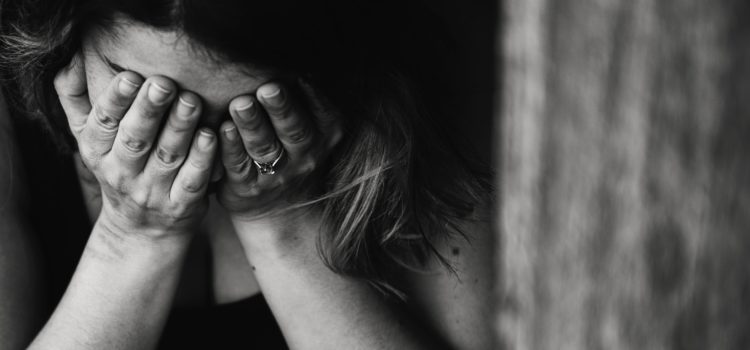
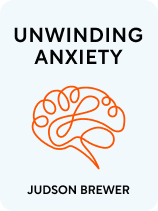
This article is an excerpt from the Shortform book guide to "Unwinding Anxiety" by Judson Brewer. Shortform has the world's best summaries and analyses of books you should be reading.
Like this article? Sign up for a free trial here.
How do you get anxiety? How does anxiety become a habit?
Unwinding Anxiety by Dr. Judson Brewer suggests anxiety is a habit loop. To understand how to break the cycle of anxiety, you first have to understand how anxiety works as a habit loop.
Let’s look at how anxiety forms as a habit.
How Anxiety Becomes a Habit
How do you get anxiety? Brewer says that whereas all organisms exhibit some form of the above behavioral cycle, the human brain has special adaptations that allow for more advanced learning techniques. In particular, the prefrontal cortex (PFC) allows us to generalize and make predictions about future situations based on stimuli we’ve already encountered. This allows us to plan for future dangers—a useful survival tool indeed.
Unfortunately, he says, the PFC keeps doing its job whether or not it has the information it needs. When we feel fear but lack adequate (or accurate) information, we end up with anxiety. In other words, anxiety is what happens when the PFC tries to plan ahead for danger, but in the absence of information, it starts making things up (“What if this? What about that?”).
Brewer also says that having too much information is just as bad as not having enough. As a result, the contemporary world has made it even easier to be anxious: With the internet at our fingertips, we easily get overwhelmed by the high volume (and often low quality) of information, which only makes anxiety worse—when the PFC has too much information to deal with, it focuses on the scariest and most sensational details.
To see how anxiety works in practice, here’s a simple example of how the basic survival behavior loop is supposed to work:
- Trigger: You’re hiking in the woods and see a bear ahead. You’re afraid of getting eaten.
- Behavior: You carefully leave the area before the bear notices you.
- Result: You don’t get eaten by the bear.
- Lesson: You learn that avoiding bears keeps you from being eaten.
However, when we sense (or simply suspect) danger but we don’t have enough information or can’t find a relevant action to alleviate the danger, the PFC makes us start to worry—to mull over all the possibilities, what-ifs, and worse-case scenarios we can imagine. Then the behavior loop looks like this:
- Trigger: You have an important review coming up at work. You’re afraid of getting a bad evaluation.
- Behavior: You can’t do anything to change or avoid the review, so you worry.
- Result: You feel anxiety.
- Lesson: You learn that performance reviews cause anxiety. The PFC might even generalize this lesson so that you learn that your job as a whole causes anxiety, or that work in general causes anxiety.
Anxiety Perpetuates Itself
The problem gets worse because anxiety tends to reinforce itself by eliciting behaviors that lead to more anxiety. Brewer explains that once we feel anxious, that anxiety becomes a trigger for new (often unhealthy) behavioral loops. For example:
- Trigger: Anxiety about your performance review.
- Behavior: You continue to worry about the review, but the worry doesn’t make the anxiety go away. Instead, you drink some alcohol to unwind.
- Result: You’re less aware of the anxiety.
- Lesson: You learn that drinking is a good way to handle anxiety.
These loops then mutate. For instance:
- Trigger: Anxiety about your performance review, plus anxiety about how much you’re drinking and how your drinking might be harming you.
- Behavior: More worrying, more drinking, and possibly new harmful habits.
- Result: You experience more anxiety than ever before—and possible physical harm from the drinking.
- Lesson: At this point, you’re likely to start judging yourself for how you’ve handled the situation, for how much you drink, and even for feeling anxiety in the first place. This judgment then feeds more cycles of anxiety.
In this way, Brewer says, anxiety gets entangled with a host of behavioral issues like substance abuse, depression, procrastination, and more.
To make matters even more complicated, when we get stressed, the PFC goes offline, which means that we’re no longer capable of rational thought and can only rely on instinctual survival responses like fighting (responding with anger), fleeing (by using substances or simply ignoring stressful situations), or freezing (procrastinating).
Because of the way it entangles itself with other behaviors, anxiety can easily pervade our basic state of being. Brewer describes how, for many people, anxious feelings and thoughts take hold even when we’re not consciously aware of any obvious stressor. This is called generalized anxiety disorder. Likewise, he notes that people early in the process of treating their anxiety often see some improvement only to get anxious about the fact that they aren’t feeling anxious anymore—for these people, anxiety is so omnipresent that it’s more familiar and comfortable to feel anxious than not to.
Techniques That Don’t Work on Anxiety
One reason anxiety is so persistent is that most of the common recommendations for habit change don’t work on anxiety. Before detailing his own plan for anxiety treatment, Brewer reviews a few commonly used methods that he says aren’t effective:
Willpower—the idea that with enough concentration or effort you can just make yourself not be anxious (or not give in to anxious behaviors). Brewer says this strategy doesn’t work because it relies on the PFC, which goes offline when we’re stressed—meaning that in the grip of anxiety or other stressful emotions, instincts, and ingrained habits take over for rational thought.
Substitution—the approach whereby when you feel like doing X, you do Y instead. This is common advice for weight loss, for example, when experts recommend drinking water instead of soda to cut calories. Brewer says this approach doesn’t work for anxiety (or anxiety-driven habits like eating disorders or substance abuse) because, like willpower, it relies on the PFC to overcome ingrained habit patterns.
Manipulating your environment—for example, someone who is trying to eat healthier might keep healthy snacks in the house instead of junk food. Brewer says this technique doesn’t work for anxiety (or anxiety-driven habits) because there’s simply no way to avoid anxiety in your life in the way that you can avoid harmful physical temptations like a bag of chips or a bottle of alcohol.

———End of Preview———
Like what you just read? Read the rest of the world's best book summary and analysis of Judson Brewer's "Unwinding Anxiety" at Shortform.
Here's what you'll find in our full Unwinding Anxiety summary:
- How to recognize and counteract anxiety with mindfulness
- Why anxiety becomes is toxic if left untreated
- A three-step method for treating anxiety

